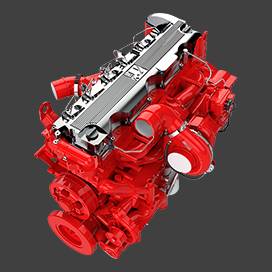Dec . 29, 2024 13:20 Back to list
Steps for Safely Removing a Brake Drum from Your Vehicle
How to Effectively Remove Brake Drums A Step-by-Step Guide
Brake drum removal is an essential maintenance skill for any automotive enthusiast or professional mechanic. While modern vehicles commonly use disc brakes, many older models still rely on brake drums. Understanding how to remove these components is crucial for brake servicing, replacing shoes, or inspecting the brake system. In this guide, we will walk through the step-by-step process of safely and effectively removing brake drums.
Tools You Will Need
Before diving into the removal process, ensure you have the following tools at hand
1. Jack and jack stands 2. Lug wrench 3. Brake drum puller (if required) 4. Screwdrivers (flathead and Phillips) 5. Pliers 6. Torque wrench 7. Safety glasses and gloves
Safety First
Before commencing any automotive work, safety should be your top priority. Wear safety goggles and gloves to protect yourself from sharp edges and debris. Make sure to work in a well-ventilated area, and if you're using hydraulic jacks, ensure the vehicle is on a flat surface.
Step 1 Preparing the Vehicle
1. Park on a Level Surface Ensure that the vehicle is parked on a flat, solid ground to prevent any rolling or movement during maintenance. 2. Loosen the Lug Nuts Using a lug wrench, slightly loosen the lug nuts of the wheel where you want to remove the brake drum. Do not completely remove them at this stage; just break their resistance.
3. Lift the Vehicle Employ the jack to raise the vehicle at the correct lifting point, typically found in the owner’s manual. Once elevated, secure the vehicle on jack stands for safety.
4. Remove the Wheel Finish loosening and remove the lug nuts, then take off the wheel to expose the brake drum.
Step 2 Inspecting the Brake Drum
brake drum removal

Before you remove the brake drum, take a moment to visually inspect it. Look for signs of wear such as grooves, cracks, or any debris. It’s also a good opportunity to check the brake shoes for wear and tear.
Step 3 Removing the Brake Drum
1. Remove Adjuster Access Cover Locate and remove the cover for the brake adjuster, usually found on the back side of the brake assembly. This access will allow you to retract the brake shoes.
2. Adjust the Brake Shoes Using a flathead screwdriver, turn the adjuster wheel to retract the shoes inward. This is critical as improperly adjusted shoes may prevent the drum from sliding off.
3. Remove the Brake Drum If the drum doesn’t come off easily, it may be rusted or warped. Gently tap around the edge of the drum with a rubber mallet to help loosen it. If necessary, use a brake drum puller to safely extract the drum without damaging surrounding components.
Step 4 Inspect and Clean
Once the brake drum is removed, inspect the internal components. Check the brake shoes, springs, and hardware for any damage or excessive wear. Clean the drum’s inner surface with brake cleaner to remove dust and debris, which can affect the braking efficiency.
Step 5 Reinstallation
If you are simply inspecting or replacing the drum, the reinstallation process is essentially the reverse of removal
1. Replace the Drum Slide the brake drum back onto the hub. Make sure it’s seated properly. 2. Adjust Brake Shoes If you’ve replaced the shoes, adjust them so they are snug against the drum but not overly tight. 3. Reattach the Wheel Place the wheel back on the hub, tighten the lug nuts by hand, lower the vehicle, and then tighten the lug nuts to the manufacturer’s specifications using a torque wrench.
Conclusion
Removing brake drums may seem daunting at first, but with the right tools and a systematic approach, it becomes a manageable task. Regularly checking and maintaining your brake system is vital for vehicle safety and performance. Remember to consult your vehicle's service manual for any model-specific instructions or precautions. Happy wrenching!
-
Premium Volvo Brake Drums: Truck, Semi & VNL Performance Parts
NewsAug.07,2025
-
BPW Axles & Suspensions | Quality Running Gear for Trailers
NewsAug.06,2025
-
Premium Iveco Brake Drum - Durable & Reliable Performance
NewsAug.05,2025
-
High-Performance Nissan Brake Drum | Durable Braking
NewsAug.03,2025
-
2014 Mitsubishi Mirage Rear Brake Drums | Durable & Precise
NewsJul.31,2025
-
High-Quality Trailers for Towing Needs | Shop Now
NewsJul.25,2025
